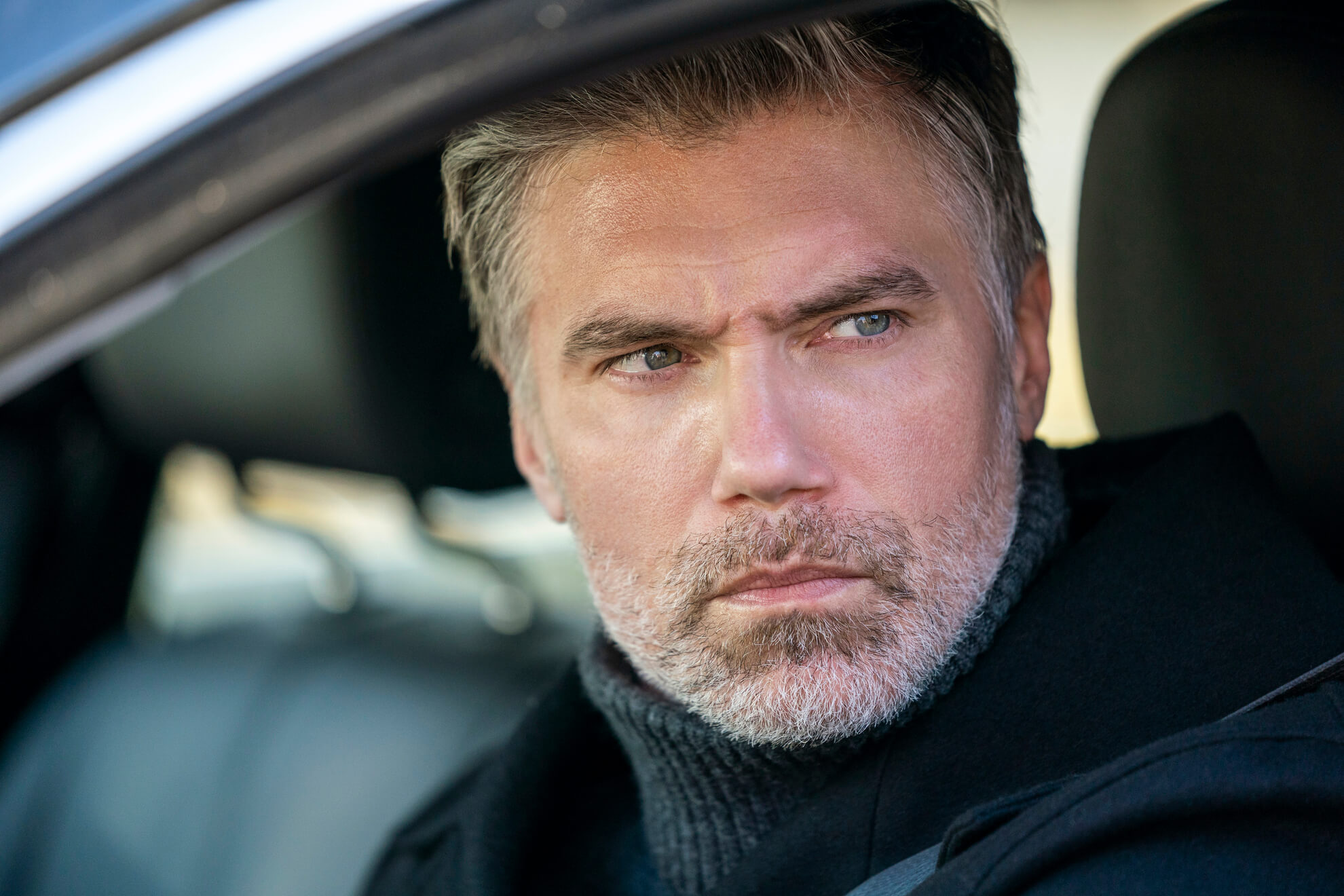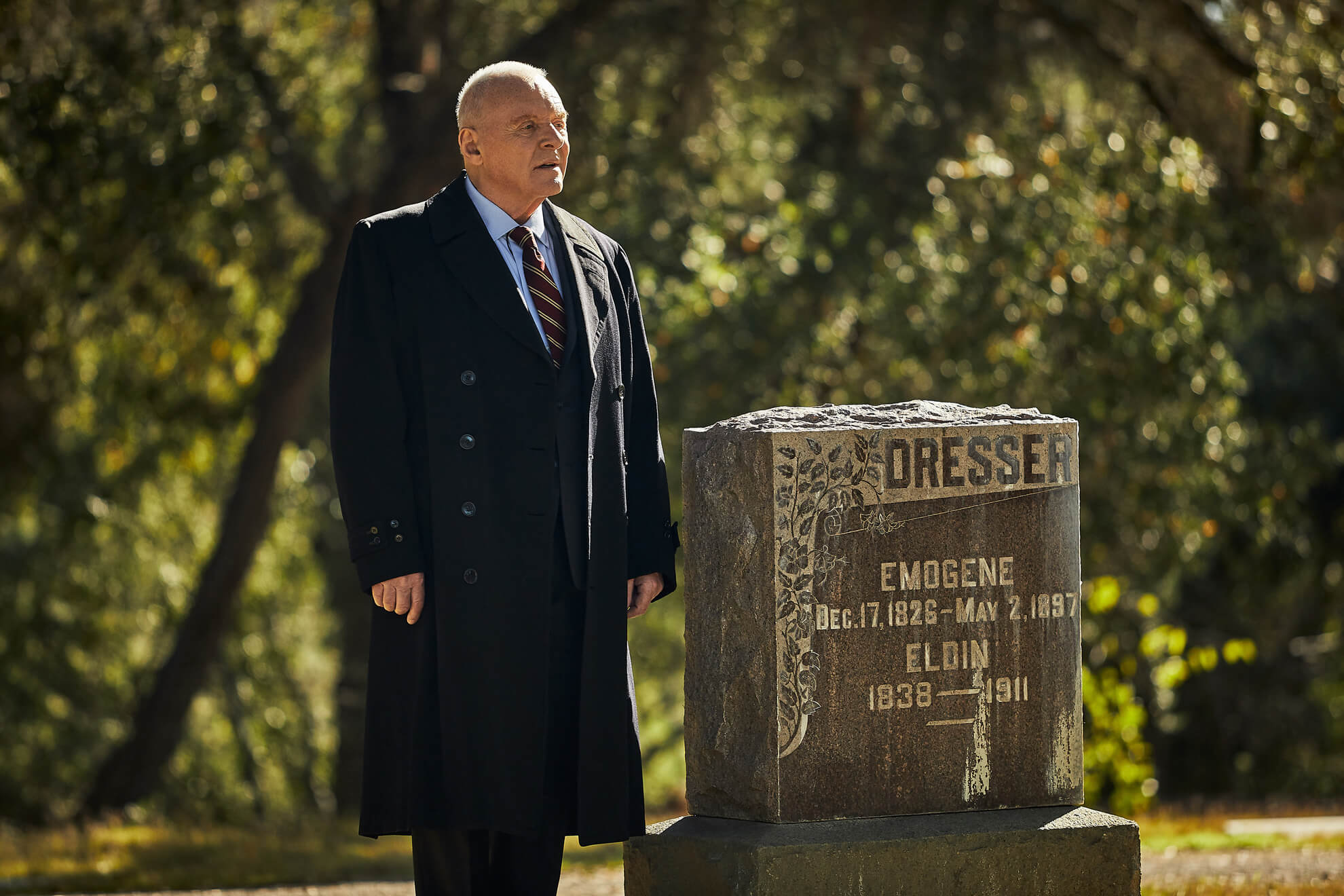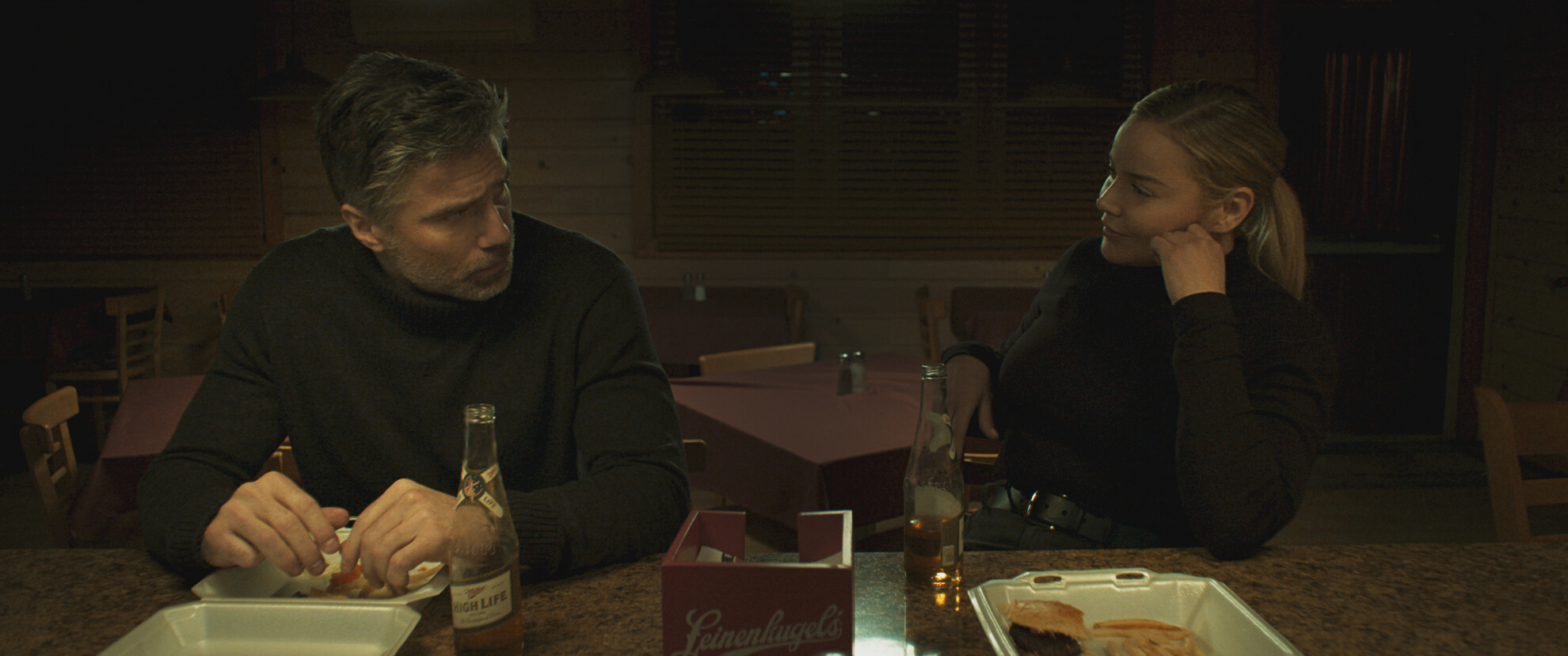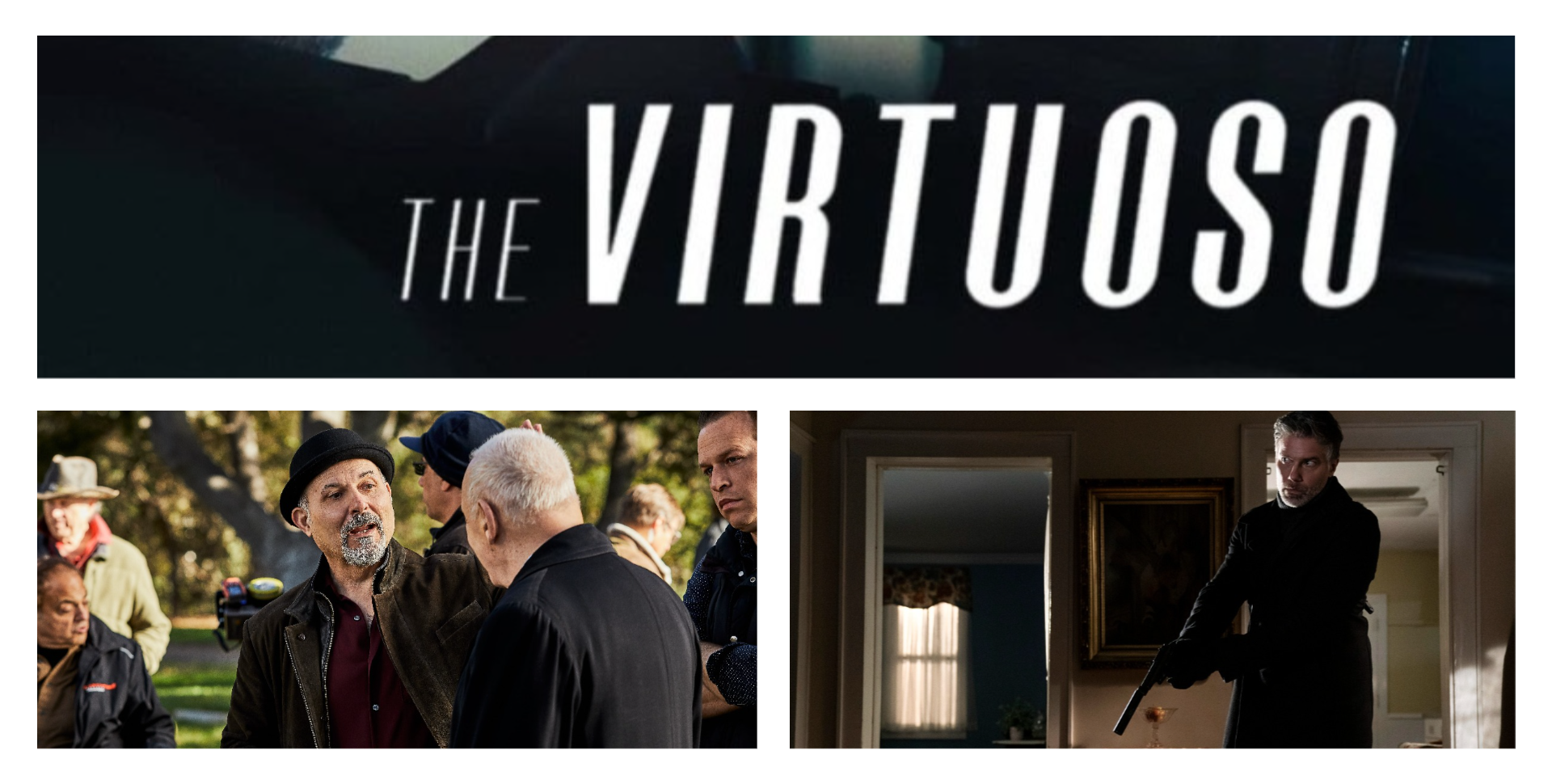The Virtuoso is the 2021 action/crime/thriller movie where a professional assassin — a self-professed virtuoso (Anson Mount) is put on an assignment to identify his target using clues given to him by his boss, played by the great Sir Anthony Hopkins.
In a recent Q&A with Borrowing Tape, we got to ask The Virtuoso filmmaker Nick Stagliano about directing and co-writing the movie with screenwriter James C. Wolf. The film was also scored by Will Blair and Brook Blair (Green Room & Blue Ruin).
The Virtuoso is now available to watch On-Demand & Digital, Blu-Ray/DVD, or Apple TV
How did you find working with Screenwriter James C. Wolf?
I was looking at my previous film, Good Day for It which was similar in tone but with one specific twist – that film was a “ticking clock” thriller in that our hero, long thought to be a “bad man”, was, in reality, a good man who did bad things when he was younger. Coming to a small diner to meet the daughter he left behind, we realize that he's actually a good man, and the circumstances of the plot with a twist of fate — force him to confront the real bad men that he ran away from, all those years ago. I personally love those ticking clock, pressure cooker set-ups — when we all know that time is against our hero and something must happen before time runs out.
So with The Virtuoso, I thought – what if our hero was actually a bad man, who makes a mistake, and starts to become “good”? Fascinated by the impact of guilt on us human beings, I wanted to create a slightly different version of GDFI here, so that a likable, handsome hero — who is actually a 'bad man' can be affected when guilt/conscience/compassion/emotion, start to infect his being.
James and I had worked together on Good Day for It, which was based on my original idea. We had met at a film festival years before that and I knew that he was good with breaking down the 3 act script and research and had a strong idea of classic story structure. With that, I told him the idea of The Virtuoso and then sent notes to work into a first draft. Once that was finished, I started to take it out as the producer but always had it in my mind as a project for me to direct, since it had originated from me and was related to my previous film.
What was the casting process like for The Virtuoso?
Anson Mount — we met many years ago on a different project of mine that will go in 2022. I was impressed by his talent, intelligence, and overall demeanor. A theater-trained, classic actor who happens to have leading man good looks. His depth of character and work ethic are second to none, and his on-set behavior was inspirational to me and many on set. A real team player who was always prepared and focused, but willing to listen to my direction and adjust whenever necessary, though that was very rare, as from our very first meeting, he got the character exactly as I saw him, so working with Anson was a great pleasure.
Abbie Cornish — again, a long process to choose the role of “the Waitress” because it is a difficult role – a chameleon by nature and a true shift of range from one end of the spectrum to the other. I met Abbie in a restaurant in NYC when we first got Hopkins attached, and I thought we got along great and was happy to hear from her manager that she felt the same way. It was difficult though, as we waited 2 years for Hopkins to free up his schedule, to stay committed to her, as a producer — many financiers wanted me to replace both leads to make it “easier” to sell the film when finished. I stayed loyal to them and am happy I did, as their performances were perfect and their on-set work ethic made them an inspiration to the entire crew. Abbie has strong ideas about her choices, which we discussed on the phone and in meetings before the shoot began so that by the time we shot, we were on the same page. Like with Anson, always prepared, on time, and great energy which we all appreciated.
Sir Anthony Hopkins — happy to say I can now call him “Tony”. Nothing surprising here, in that it was one of the great experiences of my life to meet him, then direct him in this film. I thought that the role of “the Mentor” needed and deserved an actor of his level (the highest), as that is what always elevated this film above a simple action film. I wrote a scene in the cemetery where the Mentor has a 5-page soliloquy, and I was thinking of who could pull this off really and there were very few people on that list. When UTA came to us with a shortlist of men they represented and he was on it, I thought I had to take that chance (not really believing I had a prayer.) But thankfully, the script read well to him, and that cemetery scene especially touched him as he had similar feelings of the impact of guilt and redemption on the human character. On-set and in-person and on-screen — the greatest experience. Very warm, giving to crew and fellow cast, not pretentious at all, and very much the “Tony” that he introduces himself as when he meets you.
Eddie Marsan — one of the greatest character actors in the world. Again, I took a chance trying to get him for the supporting role of “the Loner” largely because I knew he was close friends of my friend and actor Richard Brake, who I wanted to play “Handsome Johnnie”. Luck came into play here since Eddie had finished his latest season on Ray Donavan and was hanging out in London with Richard at the time we had to shoot. Richard had known the script before, and we were going to offer him the role of HJ as well, so I mentioned that it would be very cool if Eddie might consider “the Loner”. Since he was also at UTA, it was relatively easy to offer him the role, and I was very excited when I got the call that he liked it and would do it. He is always prepared and our brief phone call about the character gave him all the direction he needed to come to set the first day exactly as I had hoped and expected. A great experience working with him and I look forward to doing so again with a larger role in another film.
Richard Brake — Richard had worked with me on GDFI and I got to know him then, a Welshman who has been in the USA for many years, now splitting time between LA and London. One of the great faces in cinema, and perfect for this role. I was glad when he read the script and responded to the whole piece with such enthusiasm, since on paper his role is not that large. But he was also well prepared and perfect for the piece. The ensemble is crucial to the film’s suspense, as the audience must not be able to guess too early who the real villains or heroes are, and with this supporting cast, it worked perfectly.
David Morse — absolutely thrilled to have him in the cast. As “the Deputy” it was difficult to cast since we needed an actor that must be believable to all that he “could” be a good guy, but could equally be a bad man as well. David is that perfect mix, and his range is second to none, proven by his fantastic body of work. It was lucky for me again, in that he is actually a Philadelphia-based actor now, he was available and he just had to drive himself up to the mountains to portray the role. On set, he was great to work with and had some great questions about his character which made me really focus on the importance and challenges of this character. A pleasure and hope to work with him again.
Diora Baird — as “Johnnie’s Girl” she had the perfect look for a 40s noir fatale and delivered her small role with the right amount of innocence, bravado, and energy.

We get to hear The Virtuoso's inner dialogue with voiceover narration, can you tell us more about this creative choice?
I knew that I wanted that device in the film from the beginning as an homage to classic noir. And James really did a great job creating all of the VO for the film. Then, when Anson read the script, he really responded to it and came in separately to read just the voice-over, so he could have it in his head when necessary. In the editing process, we did trim some of the VO, especially in the 2nd half of the film, since once the plot really kicks in after he arrives at the diner, the visuals take over much of the action.
How did you approach directing "The Virtuoso"? What were your highlights — from both on-set and the final edit?
I have made only small independent films in the past, so going into this one, l thought that our 25-day shooting schedule would be reasonable.
I chose to set the film primarily in winter, in the mountains to give it that cold, blue look of classic noir and the general tone of death and despair. The location chosen was the Pocono Mountains of Pennsylvania, and while it elicited what I wanted for the setting, it didn’t make the task any easier. While the look was perfect for the film, the weather was exactly that — cold and gloomy and full of despair. Shooting low-budget in the winter in the mountains does add some very realistic challenges to your schedule, and it would have been nice to have had at least a few more days to deal with the snow, cold, equipment, and human needs.
So as the director, I would show up on set, immediately hit the coffee line, then meet with my AD to go over the shot list and shooting schedule for the day. Once that got put into motion, I would meet with my DP and review the current scene and more intensely review the shots and any specific details that I absolutely had to see in either a specific shot or the entire scene. Then over to costume design to double-check how that was going and if there were any new issues or “looks” that I need to see and approve or not. And then finally, when all of the mechanics of the day's shoot were in motion, I would reach out to the cast and just talk to them about what we were shooting that day, answer any questions, or discuss any specific moments that were essential and then go back to the set and get ready to call 'action'.
Highlights — The cemetery scene with Tony and Anson. Knowing that this was the scene that made Sir Anthony say yes, as we had discussed this scene, and his speech for 2 years before we actually shot it. Both on-location shooting it and then watching it in the final mix with all of the final film elements that make cinema special was the greatest highlight to me. Also, just the overall look and feel of the final cut, which really hit the elements of a modern-day noir that I envisioned in my mind many years earlier.

The scene where The Mentor (Anthony Hopkins) casually recounts his role in wartime atrocities was a captivating and memorable scene. Can you tell us about your experience working with Sir Anthony Hopkins?
I am very happy with that scene since it did not exist in the original screenplay. After several discussions with my executive producer Fred Fuchs (who had worked with Francis Coppola at American Zoetrope and along with Francis had produced my film, The Florentine), we both agreed that the script needed an early scene between the Mentor and the Virtuoso to better establish the relationship between men. I wanted to be clear that this was not just an employee/employer relationship as in most assassin for hire films. We also thought that this would be a good way to increase the role of “the Mentor” in the hopes that it would attract A-level actors.
I always thought that the character was one of the key factors that elevated this story above a simple action film, and it needed and deserved an actor of the highest level. After I finished the scene, I was thinking, ‘who could pull this off?’ and there were very few people on that list. One of the names was that of Academy Award® Winner Sir Anthony Hopkins, who happened to be represented by the same agency as Anson. With nothing to lose, I asked for the script to be sent to Sir Anthony — not really thinking I had a chance to get him. A month later, I received word that Hopkins was very taken with the project and would be happy to be a part of it.
Just to add a little more pressure to me though, by the time we finally got the financing in place and schedules set, due to Sir Anthony’s busy schedule, I had to start the film with the most dramatic and demanding scene, the cemetery! To start with that scene put immense pressure on me and I remember thinking — how to cover that many pages with so much dialogue in the middle of a cemetery and make it exciting, visually captivating, as well as help Tony and Anson get all those words out in one day on Day One. It was challenging and frightening, and yet, finally so rewarding when Anthony Hopkins delivers some of the most moving lines and sentiments of the film.
What was it like collaborating with Cinematographer Frank Prinzi on the film's aesthetic?
I have known Frank for over 30 years and, in fact, had worked for him in the electric department on several projects after he graduated from NYU Grad Film a few years before me. So, I was well aware of his talent and his work ethic and I appreciated both. As soon as he finished the script he called me to say how much he liked it and wanted to join the team. Most importantly, he mentioned that the one thing he felt emotionally connected to, as both a viewer and as an artist – was the haunted nature of the lead character. Until then I did not see that emotion as a key definition of the Virtuoso, but after that, we really made that a focus of the look of the film.
So conflicted and lonely that he wanted to portray that on screen. You will notice that most of his scenes either alone or with his “Mentor” (also a creature of death) are filled with the blue tint of death, coldness (both physical and emotional), and despair. We shot wide screen to make sure that we used all of the frame and separated him from others and often times, even the props and art direction, within the frame. Only later in the film, when he meets “the Waitress” do we start to introduce the warmer colors and bring the characters and sets closer within the frame.

The score was composed by Brook Blair and Will Blair (Green Room) — can you describe what it was like working with them on The Virtuoso?
I was really excited when I got to work with Brooke and Will. I was a big fan of their work on Blue Ruin and then again on Green Room. As it happens, while I was just starting post-production, I received an email from their agent who had read an article in the trades about the film and its cast, and he thought that their music would be a perfect fit for the film. Then I found out that they are based in Philadelphia, where I am from, so it was easy to meet them in person and hear their thoughts on the score.
The title The Virtuoso was always a play on words for me, since most people immediately think of a musical genius or prodigy, but I always considered him a virtuoso - of death. But that was the driving influence behind our goal to create an orchestral sound, specifically highlighting the strings. The addition of a lead viola on the opening scenes, as well as the cello for all of the Mentor’s scenes (which become his theme), were crucial to added suspense and quality of the soundtrack. I basically had several conversations with them about this style and some samples of past scores that were in the same ballpark, then they went off and did their thing, sending me cues when they felt ready. I think they are really talented and very happy to have met them.
How were the stunts executed in The Virtuoso?
Again, going back to my previous film Good Day for It, which was similar and shot in the same region of the country, I used the same stunt coordinator, Drew Leary on The Virtuoso. I wanted the actual few scenes that included any kind of violence or gunplay to be brief but brutal. For the fight scene in the bedroom between the Virtuoso and Handsome Johnnie, both Anson and Richard are used to staging fights in their previous films, so it was a great way to get them involved from the start on the planning. We did use great stunt performers for the harder shots, and I think the editing by James LeSage was perfect.
For the crucial scene in the first act when the Virtuoso makes his mistake, Drew brought on a game stunt performer to play the mom and we did that as a practical effect, with all necessary safety protocols in place. And happy to report that no one was injured in the film.
Which films/directors have influenced you as a filmmaker, including The Virtuoso? What are some of your favorite movies from the past decade?
Having come up with the general storyline and plot for The Virtuoso, I have always wanted to create modern-day noir and my love for that genre goes back since my early years when I used to watch them with my father — The Maltese Falcon, The Third Man, This Gun For Hire, just to name a few. And all of the great actors that worked in that world: Bogart, Ladd, Garfield, and the supporting casts — Greenstreet, Lorre, Ward Bond, Edmund O’Brien, and the femme fatales — Veronica Lake, Barbara Stanwyck, Audrey Totter, Ava Gardner. I felt that this storyline was in keeping with the rules and demands of noir, and I found the perfect balance between the modern feel of today’s faster-paced films, with the must-have elements of the classic genre – lighting, shadows, music, etc.
On deeper thought, what makes the film so thrilling is the subtlety, the precision, and the mystery of the plot and how “the Virtuoso” guides us through what we first believe is just another job, in his case — a murder, to ultimately, a mystery-thriller with plot twists that will have the audience on the edge of their seats until the stunning surprise climax.
Having been inspired in my directing career by the early masters of cinema like Michael Curtiz, John Ford, William Wyler, King Vidor, Billy Wilder, Orson Welles, David Lean, and my mentor Francis Ford Coppola — my main focus on set is very simply the directing of actors. Two of my previous films were adapted from the theater and a third was written specifically so the actors would be the focus of the drama.
My main inspiration who constantly drives my work, however, is Frank Capra. I approach all of my films with this essential theme which Mr. Capra expressed many years ago: “forget techniques, forget zoom lenses and subliminal cutting; remember only that you are telling your story not with gimmicks, but with actors…”
On a more modern note, I was inspired on this film by movies like the Coen Brothers “Blood Simple” and “No Country for Old Men”, “The Usual Suspects” and more recently “Memento” and “Drive”.
What themes and subject matters interest you as a filmmaker?
I would like audiences, of course, to be entertained by the film, and to be taken on a ride for which they do not know the ending, for as long as possible. While the style of the film as we have discussed is film noir, filled with themes of death, and despair, and decay, and the blue tint of coldness, the overall and underlying theme is universal — a love story, which just happens to be about bad people, doing very bad things! But what I hope will really make us think after we leave the theater is this — the impact of guilt infects your soul and continues to grow inside you, and must be dealt with before it can destroy you.
Related: Review of The Virtuoso
Watch The Virtuoso now via Amazon, DVD/Bluray, or Apple TV

